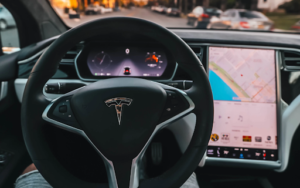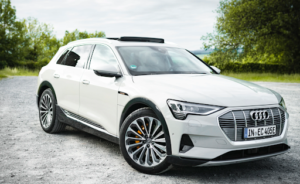Our future cars will look a lot different in comparison to what we’re used to today. The next 50 years will see a quantum shift in car technology, unlike the past 50, during which established principles were simply refined and modernized. Besides wholesale changes in propulsion technology, many people don’t realize how much the way we use our cars will change too, as well as the ownership model.
The part of the future that has already arrived is the EV – electric SUVs, cars, buses, and trucks are being launched in increasing numbers and developed nations such as the USA, UK, and the European Union already have an extensive charging infrastructure in place. Norway, for example, is now a predominantly plug-in nation, with EVs reaching a market share of 64.7 percent and plug-in hybrid EVs 20.3 percent by June 2021 – 85 percent of all new cars sold there.

Future Developments
Future Developments
Here are a few of the developments we can expect in terms of the following technologies:
- EVs: Electric vehicles have existed for more than a century but Tesla turned the market on its head when it launched the 2008 Tesla Roadster. It was basically a modified Lotus Elise with the engine thrown out and an EV drivetrain in its place, with up to 288 horsepower and blistering performance in its day. It set the template for EVs and became the first series-production EV to use lithium-ion batteries. Now the market is awash with EVs of every shape and size, and large charging networks have sprung up around the world. Future EV development will focus on increasing range and reducing battery prices. In 2020, the prices of some battery packs – specifically those in Chinese e-buses – dropped to below $100 per kWh for the first time ever. The average 2020 price was $137. With $100 within reach within around three years, EVs will reach cost parity with ICE cars. Now, Volkswagen and Tesla say $60 per kWh is on the horizon – which will drop an EV’s MSRP to below that of a comparable ICE car.
- Autonomy: Besides Honda, no one can claim to have made a proper Level 3 autonomous car yet and most of the autonomous vehicles currently on the market are regarded as Level 2 cars. Fully autonomous Level 5 cars will be able to maintain automatic control of the vehicle on any road and in any country, under any conditions. This is likely still a few decades away, but in the meantime, full autonomy might be reached in very specific circumstances, such as on certain routes in certain cities, where fully autonomous, driverless robotaxis will drive us around. Volvo is starting to standardize lidar scanning technology on its cars, which is necessary to detect objects accurately, even in poor weather.
- Safety: Thanks to the autonomy drive, the cars we drive today are already becoming safer. Modern active driver-assistance features already keep us at the correct following distance, can stop and go automatically in a traffic jam, keeps us in our lane, can recognize pedestrians and cyclists, and can read traffic signs. Car-to-X connectivity will not only make cars aware of each other but also of other road infrastructure, enabling traffic to flow better and avoiding accidents.
- Sharing: Shared mobility is already a reality in terms of bicycles and e-scooters in some countries and this will probably extend to cars before long. Our shared car of the future will probably be paid for via a subscription based on your usage pattern. It won’t be your car and will show up when and where you need it to take you where you need to be. You won’t own it or maintain it, or have to charge its battery. Everything is included in the flat rate you pay. This will happen in big cities first, of course. The vision of sharing autonomous EVs is one of an e-pod arriving, front seats facing the back seat so passengers can converse, and the car autonomously taking you to your destination.

The CASE Model
We are moving closer to the CASE model, where mobility is:
- C – connected
- A – autonomous
- S – shared
- E – electric
In terms of realizing this model, by 2030:
- More than 95 percent of vehicles sold worldwide will likely have built-in connectivity
- Nearly 80 percent of vehicles sold worldwide should have Level 2 autonomy
- Just over a quarter of mobility profits might be derived from on-demand mobility sources
- Nearly a quarter of all global car sales should be EVs

Conclusion
We are arguably living at the best possible time in automotive history. Motoring industry is going through one of the biggest transitions ever, starting with EVs. New electric car, crossover, and truck models are launched by the day. The latest cars are already permanently connected to the internet and receive any data they need over the air, including software updates. Soon, cars will also connect to each other to make our lives easier and our roads safer.